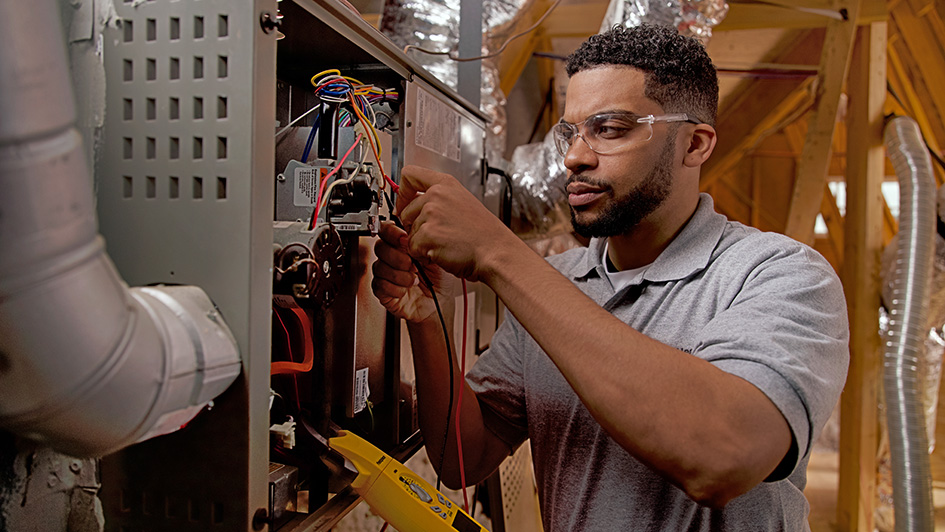
A furnace is usually a background player in your home, helping keep you warm in the cold winter months. It often isn't noticed until a malfunction appears.
One root cause may be that your furnace has a cracked heat exchanger. It can be a safety risk, so it’s critical to know the symptoms of a cracked heat exchanger and what you can do if you are worried that might be the problem.
What Is a Heat Exchanger in a Furnace?
A heat exchanger transfers heat from the combustion chamber inside your furnace to the air that flows throughout the air ducts. It generally accomplishes this via coils or tubes that heat the air while functioning as a barrier to keep byproducts formed in the combustion chamber, called flue gasses, from leaking out into your home.
Is a Cracked Heat Exchanger Dangerous?
Given its important role, it isn't surprising that a damaged heat exchanger can pose a risk. A crack in the heat exchanger can permit dangerous gasses – like carbon monoxide, which can be lethal – to flow through your home.
For obvious reasons, don't ever turn on your heating if you think it has a cracked heat exchanger, as letting it run could make the whole household ill. Call an HVAC professional as soon as possible if you believe your heating has a cracked heat exchanger that needs repair.
Four Symptoms of a Cracked Heat Exchanger:
- Furnace switches off: A crack in your heat exchanger may cause your furnace to switch off.
- Unusual Smells: If the air leaving your furnace has an intense chemical smell, it might be a sign gas is slipping through cracks in your heat exchanger. These gasses, which will often smell like formaldehyde, are a significant warning sign.
- Carbon monoxide alarm initiates or you recognize symptoms of poisoning: If a cracked heat exchanger is relieving carbon monoxide inside your home, your carbon monoxide alarm could go off or family members might start experiencing signs of carbon monoxide poisoning. Complications include headaches, dizziness, weakness, nausea, vomiting or feeling sleepy. If an alarm goes off or you feel sick, get out of the home right away and then call for help.
- Soot: If you find black sooty collecting near the exterior of your furnace, it’s an indication something might be seriously wrong.
What You Can Do if the Furnace Heat Exchanger is Cracked
If you suspect your furnace has a cracked heat exchanger, contact a pro well versed in furnace installation Payson right away so they can take a look at your system and, if needed, start a furnace heat exchanger replacement. Costs will differ depending on the situation, but estimates can roughly suggest $1,000 to $3,000.
Fortunately, the good news is that heat exchangers are often covered by the warranty. It's a good idea to check the warranty paperwork on your furnace, since while the warranty might not cover the entire cost of repairs, it can significantly lower your bill.
How to Prevent a Cracked Heat Exchanger in Your Home
One of the easiest ways to avoid problems in your furnace overall is through regular furnace maintenance. Furnaces work the best when they run efficiently. Calling a certified professional to inspect your furnace for worn-out parts, dirty filters and other likely problems can keep you from getting a big bill later on.
It’s also a good idea to inspect your furnace filters every few months – it’s recommended some filters be swapped out every 90 days or sooner if they are dirty or grimy. While the filters aren't connected to the heat exchanger itself, the strain of pulling air through a clogged filter makes your entire furnace work longer to complete its job. And the harder your furnace needs to run, the more wear and tear pieces like the heat exchanger will experience.
